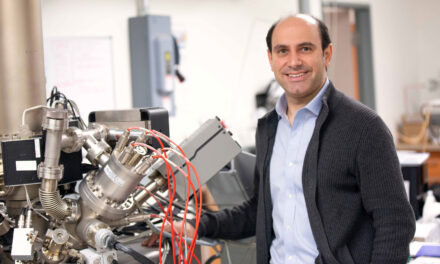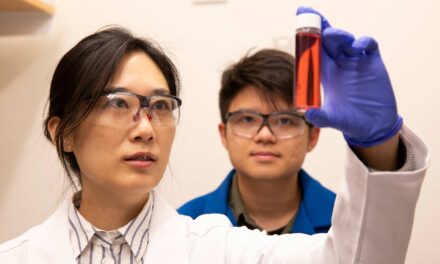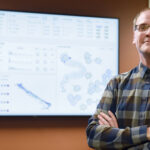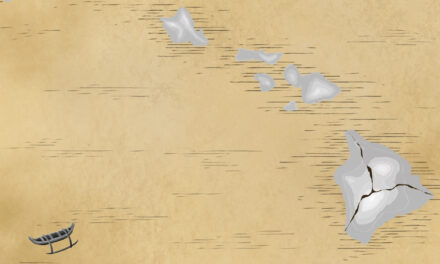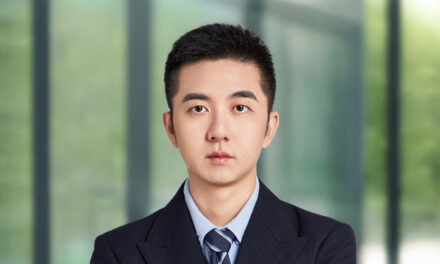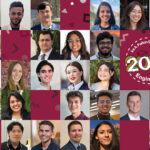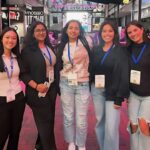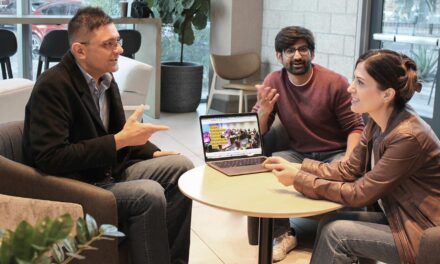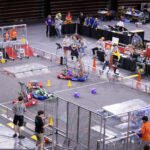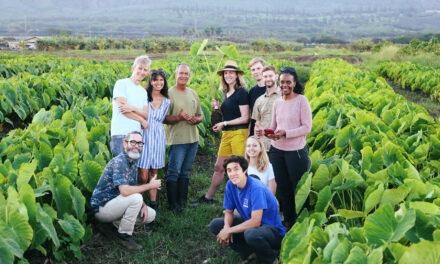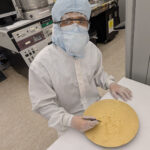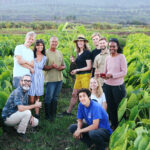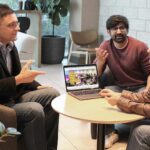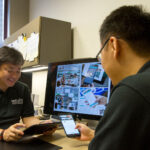
Preparing for the next generation of nuclear energy
Representatives from the U.S. Department of Energy visit ASU researchers to explore innovative nuclear energy labs

Professor Pedro Peralta showcases laboratory equipment funded by the U.S. Department of Energy’s Nuclear Energy University Program used in his research exploring nuclear fuel deformation. Photographer: Erika Gronek/ASU
Bright and early on an unusually tepid Tempe morning — before the crowds of students fill the hallways — a quiet research lab on the Arizona State University campus springs to life with the excitement of new visitors. Representatives from the United States Department of Energy’s Office of Nuclear Energy gather amid the lab’s towering equipment to get a glimpse of the future of nuclear energy production in Arizona. Their guides are Yongming Liu and Pedro Peralta, professors in ASU’s Ira A. Fulton Schools of Engineering.
The Office of Nuclear Energy established the Nuclear Energy University Program, or NEUP, in 2009 to prioritize university support, funding nuclear energy research and lab equipment upgrades at U.S. colleges and universities, as well as providing educational support for students. NEUP’s overall goal is to help the Department of Energy accomplish its mission to advance the development and exploration of nuclear science and technology.
Liu and Peralta, both professors of aerospace and mechanical engineering in the School for Engineering of Matter, Transport and Energy, part of the Fulton Schools, have collaborated with NEUP on research projects and fellowships. On the recent tour, the Department of Energy representatives saw firsthand the outcomes of this work.
Turning up the heat
The tour began in Liu’s lab, where his research addresses the need for nuclear power plant safety. His goal is to provide a mechanism to investigate and predict nuclear power plant material failure under certain conditions.
Because next-generation nuclear power plants will likely operate in higher temperatures to increase energy efficiency, materials will have to endure creep-fatigue conditions, which involves the deformation of a material under repeated stresses at high temperatures.
Liu says there are few studies that focus on creep-dominant creep-fatigue failure at high temperatures, and his team is the first in the world to develop hybrid control testing profiles for this unique material failure mode.
“We proposed a unique testing program with advanced multi-resolution imaging capability to reveal the fundamental failure mechanism of nickel-based creep-resistant high-temperature alloys used in the tubing that holds nuclear fuel in place,” Liu says. “As a leading university, ASU is working with collaborators from other universities and national laboratories to develop multiscale simulations for accurate life prediction of the tubing. The integrated experimental and simulation framework helped us to win the proposal.”
Liu’s group has already influenced the way research in this area is done around the world. This new method for systematic testing of nuclear reactor materials has provided direct evidence to correct a common misconception in the field.
“Our imaging-based mechanism investigation showed that the creep damage and fatigue damage are actually competing with each other in these high-temperature conditions,” Liu says. “Before this study, people assumed that the two damage mechanisms were collaborating with each other but had no direct evidence to support this hypothesis.”
A recipe for reliability
After learning about Liu’s research, the tour group visited another building on campus to see Peralta’s work. His team explores nuclear safety under accident conditions.
“A key issue for nuclear power generation is to ensure that reactors can operate safely even under accident conditions,” Peralta says, “particularly those involving the loss of active cooling needed to extract the heat generated by the nuclear fuel elements.”
Without cooling, the hard ceramic nuclear fuel will overheat, expand and crack. The fuel pieces then push against the metallic tubes used to hold it in place, which soften because of the high temperature. This has the potential to rupture the tubes and release radioactivity.
While the latest designs for nuclear reactors include passive cooling systems to help with this, designing and testing new nuclear fuels that are accident tolerant is critical. Understanding how nuclear fuels deform as they push against the tubes is crucial in modeling the mechanical interaction between fuel and the metallic tubes surrounding it, so that the structural reliability of nuclear reactor cores can be predicted and improved. Peralta’s work centers on understanding the fuel deformation mechanisms.
Because the nuclear fuel typically used in common power reactors is composed of many small crystallites, which can be arranged in various ways, fabricating and testing samples of nuclear fuels with several different arrangements would be impractical and costly.
Instead, the research team aimed to understand fuel deformation via a three-pronged approach. First, they grew a single crystallite to a large size and tested it to understand how each crystallite deforms. Then they developed techniques to characterize and map the arrangement of crystallites in actual nuclear fuels. Finally, Peralta’s group developed multiscale modeling approaches using the information gathered from the previous steps.
Peralta’s approach has the potential to expedite the design and certification of accident-tolerant nuclear fuels, leading to reduced time cycles and cost savings.
“While the work is a piece in a much larger puzzle, it is a piece that needs much more attention and that can have an important impact on the overall performance and reliability of nuclear reactors,” Peralta says. “In particular, results so far have shown there is potential to improve the deformation mechanisms of uranium oxide at temperatures lower than what was considered possible, which in turn could lead to less fuel cracking, higher thermal performance and improved structural reliability.”
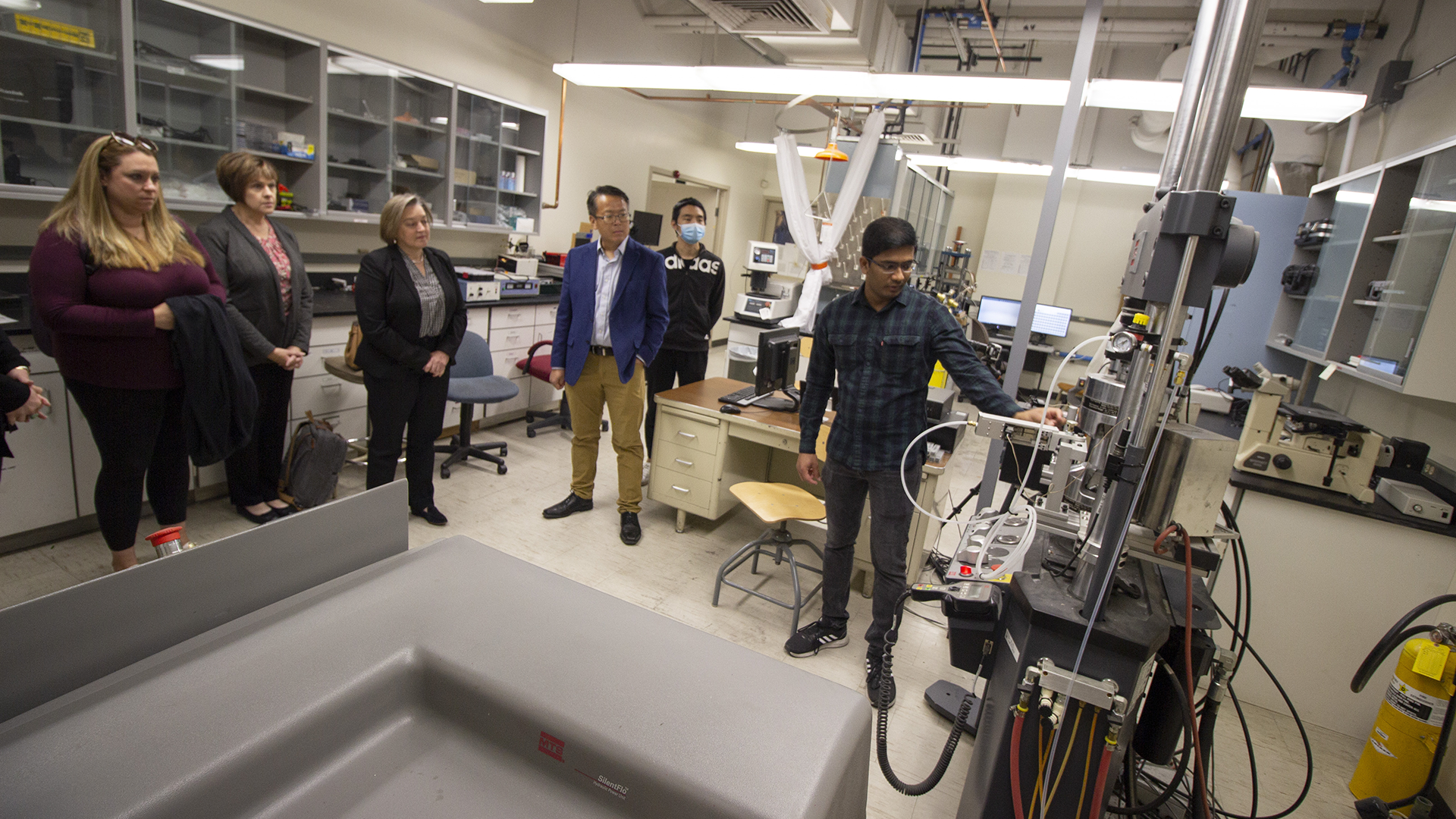
Representatives from the Department of Energy (from the left: Jenna Payne, Joanne Hanners and Alice Caponiti) accompanied by Professor Yongming Liu and graduate student Changyu Meng listen to graduate student Kaushik Kethamukkala describe the functions of equipment funded by NEUP. Photographer: Erika Gronek/ASU
Investing in the future
Student researchers actively participate in Liu and Peralta’s research projects, and their involvement is imperative to the success of NEUP’s mission to advance research and develop of ways to resolve technical, cost, safety and security concerns associated with nuclear energy.
To support the academic endeavors of students pursuing a nuclear energy-related degree, NEUP provides undergraduate-level scholarships and graduate-level fellowships. Undergraduate students can receive a $10,000 one-year award, while graduate fellowships offer $169,000 over three years.
ASU students interested in working with Liu or Peralta’s group can get involved through Fulton Schools-sponsored programs such as the Fulton Undergraduate Research Initiative, also known as FURI, or through external agency-sponsored projects including fellowships from the National Science Foundation, DOE and NASA. These opportunities typically focus on materials, mechanics and data analytics.
With NEUP’s help, this groundbreaking research and the next generation of the nuclear energy workforce will help to meet the national demand for highly trained scientists and engineers and promote nuclear energy as a resource capable of meeting the nation’s energy, environmental and national security needs.


